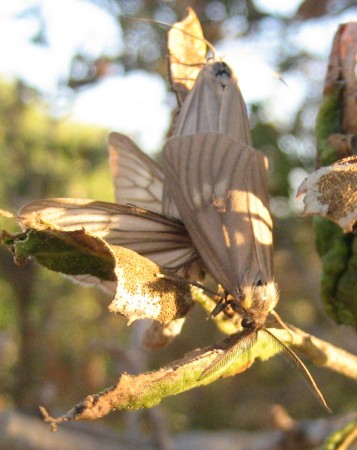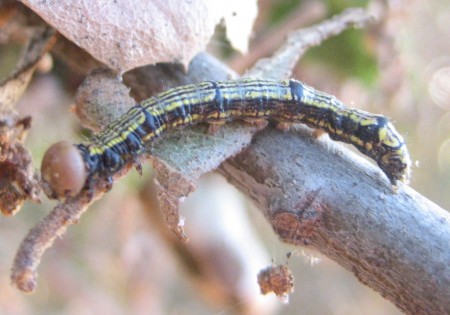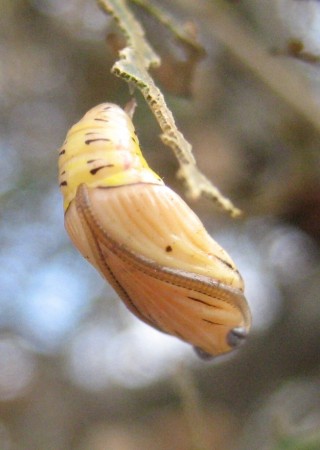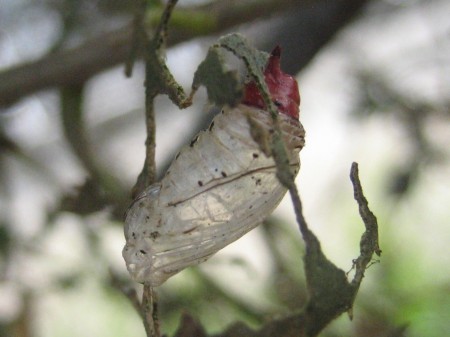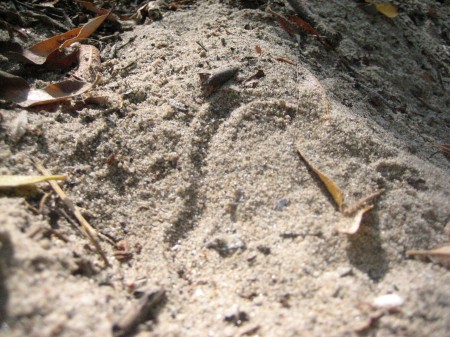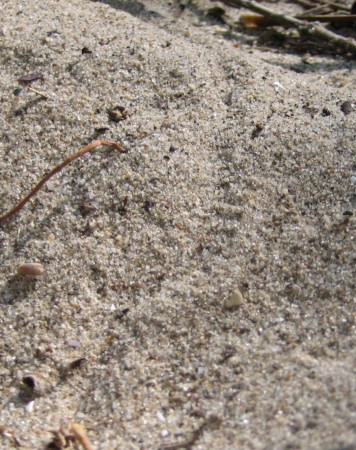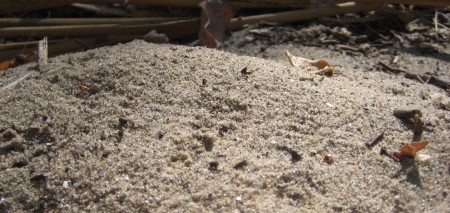Late one afternoon at the Bluffs last week I noticed a large number of California oak moths (Phryganidia californica) fluttering around a small coast live oak (Quercus agrifolia). The tree is right by the Lois Sidenberg Overlook sign, across from the bathrooms at the south end of the Viola Field parking. I wondered what the moths were doing, until some fluttering on a branch called my attention to these three moths:
That’s a female moth on the top, a male moth (identifiable by his feathery antennae) mating with her below, and a second male fluttering off to the side. That second male presumably was attracted by the female’s pheromones, but was too late on the scene to mate with her.
When I looked closer, I realized that the tree was full of oak moth caterpillars. Here’s a shot I took of one of those:
The California oak moth population rises and falls on a 6-8 year cycle. At population peak, stands of oaks can be completely defoliated. Interestingly, healthy oaks appear not to be harmed by these outbreaks. According to a 1986 postdoctoral study by David Hollinger of Stanford, nitrogen cycling is accelerated during the outbreaks, such that the moths actually help fertilize the soil, improving the oaks’ longterm health. See Herbivory and the cycling of nitrogen and phosphorus in isolated California oak trees.
Here’s a short video I took:
At the time I shot that video, I was transfixed by the beauty of the moths’ mating flight. In my memory, the scene is as quiet as a cathedral. After a few minutes I noticed another sound: the gentle, rain-like patter of caterpillar frass falling onto the leaves beneath the tree.
Watching the video after I downloaded it from my camera, the dominant sound is the traffic on the 101 freeway. I guess my brain filtered that out. Good job, brain.
Update: I went back later and noticed a bunch of pupae in an oak on the edge of the Viola Field parking. Here’s my favorite of the shots I got of those:
I also found this: the exuvia left behind after an adult moth emerged:
